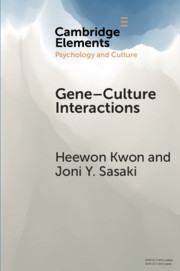Element contents
Gene-Culture Interactions
Published online by Cambridge University Press: 04 February 2019
Summary
Keywords
- Type
- Element
- Information
- Online ISBN: 9781108562140Publisher: Cambridge University PressPrint publication: 07 February 2019
References
- 42
- Cited by



